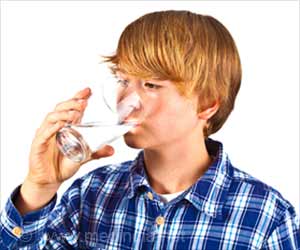Inhaling dangerous particulates and respiratory exposures that dentists and dental technicians face every day in dental clinics may increase the risk of developing occupational lung disease, reveals a new study.

‘Inhaling dangerous microscopic, airborne particulates, and gases during dental procedures can put dentists and dental technicians at a higher risk of developing occupational lung disease.’
Read More..




Fotinos Panagakos, associate dean of research at the West Virginia University School of Dentistry, is collaborating with a team at the National Institute for Occupational Safety and Health to study how microscopic, airborne particulates and gases might be generated during dental procedures. NIOSH--a division of the Centers for Disease Control and Prevention--is funding the project.Read More..
"When a dentist is drilling into your tooth, they're using water with suction, so the suction system will capture most of the particulate matter. And if it does go into the air, they're wearing a mask that should prevent the moisture and particulates from going through," Panagakos said. "It's really all the other work that they do outside of the mouth--grinding things, polishing things, modifying appliances, pouring and trimming plaster, often without a suction system to pull particulates away, and many times not wearing any respiratory protection--that are of concern."
Pangakos and his collaborators--including Randall Nett and Brie Blackley, of NIOSH--are assessing how dental professionals come into contact with vapors, gases and airborne dusts in dental clinics. At five WVU teaching clinics and 29 private dental clinics that collaborate with the dental school's Department of Dental Practice and Rural Health, they will measure the size and concentration of particulates in real time during common dental procedures. They will also characterize the particulates' and gases' chemical composition. The samples they'll analyze are diverse: metals, dust, silica, volatile organic compounds and anesthetic gases.
Going beyond the clinics' workstations, the researchers will evaluate the ventilation at each clinic they visit. "In some smaller clinics, it could be that their setting is in a strip mall, say, and the ventilation systems have not been evaluated," said Blackley, a research industrial hygienist. "We will characterize not only the potential exposures that are present but what actions can be taken to mitigate them."
The impetus of the study was a cluster of dental professionals diagnosed with the same chronic lung condition--idiopathic pulmonary fibrosis--at a single Virginia clinic. IPF is characterized by scarring in the lungs. It makes patients progressively short of breath and can call for supplemental oxygen, mechanical ventilation, or a lung transplant. It's commonly fatal within two to five years, and it has no cure.
Advertisement
Sometimes the only personal protection dentists have in the lab is the surgical masks they wear when they treat patients. But "that mask is really not designed to eliminate the kind of particulate matter that eventually could cause this problem," Panagakos said.
Advertisement
"We don't want to just point to a potential hazard and say, 'Here's a problem.' We want to be able to characterize exposures and recommend actions that dental personnel could take to protect themselves," Blackley said.
"If you're in a dental lab facility where a dental lab technician works, they probably have a higher level of preventive measures in place. Here at the Dental School, our labs are equipped along those lines," Panagakos said. "But if you're at a dental office, there's probably very little protection, if any."
Source-Eurekalert















